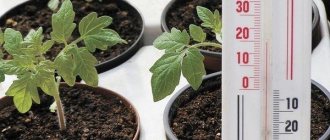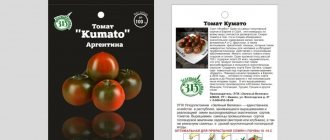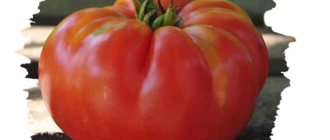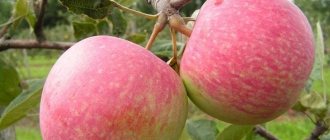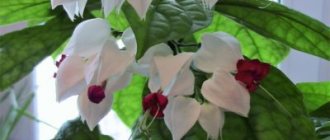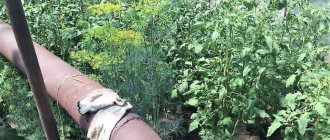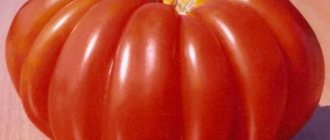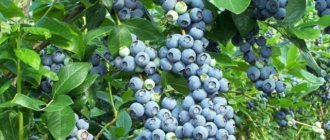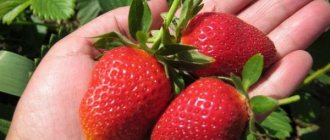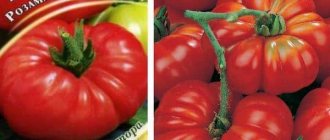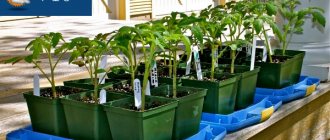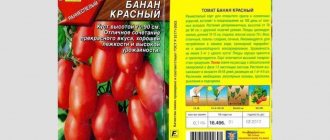Characteristics and description of the variety
This tomato includes a whole series of varieties, consisting of five subspecies. Numerous reviews only indicate a change in the taste and color of ripe vegetables. Agricultural technology remains the same for all five subspecies.
Palette of subtypes
Let's get acquainted with the existing subspecies of the Japanese variety. As mentioned above, the main difference between the crop is the color of the fruit.
Advantages and disadvantages remain the same for all types:
- Red. Of all the subspecies, the most common type. Ripe vegetables are excellent in summer salads, vegetable stews and first courses. They do not lose their taste in preserves and marinades. The taste of vegetables is sweet. They are characterized by long-term storage and good transportability.
- Pink. Characteristics and reviews indicate that it is in less demand among gardeners due to its average yield. But the average result is compensated by the excellent taste of ripe fruits, rich, sweet, without sourness. Many people find fruity notes in the taste.
- Black. The color of tomatoes resembles the color of dark chocolate. The subspecies is interesting for winter preparations: marinades, pickling, canning. It has a high fruiting rate and a pleasant taste of ripe vegetables. The main disadvantage is the short shelf life.
- Orange. Due to the high sugar content, the taste can be classified as fruity. The color is uncharacteristic for a tomato, deep orange, more velvety than glossy. Reminiscent of a frozen drop of fiery lava.
- Gold. The color of the vegetables is rich yellow, the color of the bright sun. The taste, like that of the orange subspecies, is noticeably sweet due to the increased amount of sugar. The fruiting rate depends on the growing conditions.
The photographs show representatives of the Japanese variety.
Distinctive features
The bush is indeterminate, height – 1.5-2 m, the stem is not strong enough, the foliage is average, the leaves are small. The inflorescences are simple, purple in color, and grow in clusters. The stem forms up to 5 fruit-bearing branches, each cluster bears 5-6 fruits.
The productivity is high, 3 kg of fruits are harvested from 1 seedling, provided that no more than 4 plants are planted per 1 square meter. m.
Mid-season species, 110-120 days pass from planting to full ripening.
The culture is characterized by high immunity to the main diseases of the nightshade family. Recommended for cultivation in open ground and in greenhouse conditions.
The indeterminate type requires a mandatory garter: if this is not done, the tall stem will not support the weight of the fruit-bearing branches and will break. In addition to staking, plants require regular pinching. If you do not remove rapidly growing young shoots, this will lead to dense plantings.
Fruit characteristics
The average weight of the fruit is 150-180 g, the shape is unusual, pear-shaped, round, narrowed towards the top. The taste is excellent, sweet, mixed with fruity notes, and can be classified as dessert. The pulp is dense and juicy. The peel is durable and not prone to cracking.
Thanks to their durable skin, tomatoes can withstand long-term storage without losing their presentation; they can be transported over any distance.
Red truffle tomatoes on video
This variety is not included in the State Register of Breeding Achievements of the Russian Federation.
You can see other interesting varieties and hybrids of tomatoes with photos, descriptions and reviews in our Tomato Catalog. Enjoy watching.
If you grew Japanese red truffle tomatoes, please write whether you liked them or not. What was the yield and taste of the fruits in your climatic conditions? How do you rate the disease resistance of this tomato? Briefly describe the advantages and disadvantages of this tomato in your opinion. If possible, attach a photo of the entire bush or individual fruits you grew to your comment. Thank you!
Your reviews of the Japanese truffle tomato and additions to the description will help many gardeners evaluate this variety more objectively and decide whether it is worth planting or not.
How to grow seedlings
Sowing seeds for seedlings begins 2 months before planting in the ground. Before sowing, seeds undergo mandatory preparation.
Seed preparation
The seed material is laid out on the table and carefully examined one by one for visible damage. To check for emptiness, the seeds are placed in a saline solution for 10 minutes. Those that float to the surface are disposed of, the rest are washed with running water.
Reference. A saline solution is prepared from 1 teaspoon of salt and a glass of water.
Then the grains are disinfected in a weak solution of potassium permanganate for 20 minutes. This necessary procedure ensures further healthy growth of seedlings. After disinfection, the seeds are washed with running water.
To improve germination, the seed is soaked in a growth stimulator for 10-12 hours. The most used drugs are Zircon and Kornevin.
Container and soil
The soil is prepared from turf soil, humus and washed river sand in a ratio of 2:2:1. All components are thoroughly mixed and the resulting mixture is poured with a hot solution of purple potassium permanganate. This technique disinfects the soil, destroying pathogens that can cause irreparable harm to plantings.
Reference. Turf soil is characterized by porosity and a rich composition of nutrients.
The disinfected soil is laid out in planting containers, at the bottom of which small drainage holes are first made to drain excess moisture.
Plant in a common wooden box or individual containers: plastic or peat cups. Peat cups are the most convenient container for propagating seedlings, since the plants do not need to be picked and replanted: they are placed in the ground along with peat containers, which gradually dissolve in the ground.
Landing
The seeds are sown to a depth of 1.5 cm with a distance of 3 cm from each other, sprinkled with soil on top, slightly moistened with warm, settled water and covered with film to create a greenhouse effect. Planting containers are left in a room with a temperature of at least 20°C. Seed material germinates at lower temperatures, but seedlings will appear later.
Seedling care
When shoots appear, the film is removed and the containers are moved to the windowsill, but not to direct sunlight. Daylight hours should be at least 13 hours. If there is a lack of daylight, supplement the lighting with fluorescent lamps.
Water with slightly warm, settled water along the edge of the nursery with a regular tablespoon. After watering, the soil is carefully loosened without touching the young roots. The condition of the soil must be constantly monitored, not allowing it to dry out. But over-watering is also not recommended, since unformed roots can rot.
When 2 true leaves appear, the seedlings dive, planting them in separate containers. During picking, weak plants are disposed of, leaving only strong and healthy bushes.
2 weeks before planting, the seedlings begin to harden by taking them outside in the daytime for 1 hour. Gradually, this interval is increased to 10 hours, and the night temperature in the room where the seedlings are brought is reduced to 13°C.
Important! 1 week before transplanting, seedlings are fed with a full range of mineral fertilizers with a predominance of potassium and phosphorus.
Features of care
In order for a tomato bush to produce a bountiful harvest and enjoy a long period of growth, it is important to care for the plant based on the requirements of this variety.
Care criteria include:
- watering;
- fertilizer;
- loosening the soil;
- bush formation.
Watering and fertilizing
Water the “Japanese truffle” once every few days. The bush does not require a lot of moisture, but it must be watered regularly. Water for irrigation is used at room temperature. The best time of day to moisten the soil is after sunset.
Combined fertilizers are used as fertilizers, which must contain potassium and phosphates. Substances in the form of a solution are applied to the leaves and stem of the plant with a spray bottle. You can also use natural fertilizer - wood ash.
Loosening the soil and weeding
Loosening the soil is an important element of plant care. It prevents crusts from appearing on the soil. It is necessary to carefully loosen the soil with a hoe near the bush, without touching the roots of the tomato.
Important! Sometimes the loosening procedure is called “dry watering”, since if it is performed correctly, the tomato does not need water for up to 10 days.
It is equally important to weed the ground around the tomato. Remove weeds and excess shoots around the bush, and also trim off dried leaves and stems as they appear. This will allow the tomato to receive more microelements from the soil.
Bush formation and pinching
Stepping is a necessary and mandatory procedure for the “Japanese truffle”. Since the branches of a tomato bush grow at an accelerated pace, gardeners cut them off with a sharp garden knife, leaving no more than 2-3 stems. The trunk is formed from 5–6 brushes.
Remove stepsons and side branches immediately after they appear. This way you will allow the plant to receive more nutrients, which will be spent on the growth of fruits, and not on the growth of branches.
The fruits of this variety of tomatoes are quite heavy, so it is necessary to garter the bush so that the stem does not bend from the weight. To do this, use a rigid support to which the stem is tied. In addition, the fruit clusters also need to be tied up.
Diseases and pests
Despite its resistance to the most famous tomato diseases, “Japanese truffle” is susceptible to certain diseases if the bush is not properly cared for.
Blackleg disease is the most common disease in nightshades of this variety. It is expressed in blackening of the stem at its base. To combat blackleg, water with a solution of potassium permanganate in a proportion of 1 g/10 l of water.
It will also be useful for you to know why and how to properly treat tomatoes with boric acid, Bordeaux mixture, and iodine serum.
The specialized drug “Zubr” also helps, which effectively destroys the darkening of the trunk. During the period of fertilizing with disinfectants, it is necessary to reduce the amount of watering and improve ventilation, especially for greenhouse bushes.
Tomato may be damaged by Phoma blight. It appears in the form of brown spots on the leaves, in which small particles of black mushrooms are clearly visible. To destroy the infection, fungicides are used and plaque on the leaves is also removed. Just as in the previous case, it is necessary to reduce soil moisture and eliminate fertilizing with nitrogen fertilizers.
Sometimes dry spots appear on tomato leaves. This is also a sign of plant disease. Round spots grow from 2 mm to a couple of centimeters in diameter. Leaves affected by such spots dry out and fall off. To eliminate this problem, you need to use horticultural medicines “Consento” and “Antrakol”.
In addition to diseases, dryness and decay, the plant can be attacked by parasitic insects.
Tomatoes are susceptible to attacks by the following pests:
- spider mite;
- aphid;
- thrips;
- whitefly
You can free the bush from parasites using insecticides. And subsequent treatment with fungicides will consolidate the result.
Important! The Japanese truffle variety is generally resistant to harmful microorganisms and fungal diseases.
How to grow tomatoes
After 2 months, the seedlings are ready to be transplanted into the ground. If by this time the soil temperature is less than 15°C, planting seedlings should be postponed. Cold soil will have a detrimental effect on the roots of young plants.
Landing
The soil is prepared in the fall by digging up and applying mineral fertilizers. In the spring, they dig again and make holes 15-20 cm deep a week before planting.
Transplant in the morning, evening or on a cloudy day. Such conditions are necessary for faster adaptation to new conditions. After transplantation, the holes are compacted, watered with warm water and left to get used to the new conditions for 7-9 days.
Planting pattern: 50 cm – distance between plants, 50 cm left between rows. For 1 sq. m place no more than 4 plants.
Further care
Regular watering is established no more than 2 times a week. Water moderately, strictly at the root, with warm, settled water. It is not advisable to water with cold water. For settling and heating, water is poured in advance into large containers, which are installed on the site specifically for these purposes.
After watering, the soil is loosened and weeds with roots are removed. To retain moisture, the beds are mulched with straw or peat. This is especially helpful on dry days with strong evaporation of moisture.
The crop is fed three times during the entire growing season. Fertilizers are mineral fertilizers or organic matter. As organic matter, mullein infusion or bird droppings are used in a ratio of 1:15. The first feeding is applied during flowering, the second feeding is given during the formation of ovaries, the third feeding is given during the fruiting period. At this time, potassium substances are added to speed up the ripening of fruits.
Features of care and possible difficulties
Tall bushes are subject to mandatory garter. Fruitful branches are so heavy that breaks appear. If the integrity of the plant is compromised, the movement of nutrients is not fully ensured. For this reason, broken brushes do not provide the developing fruits with sufficient nutrition, and they stop developing.
To secure the plants, a wooden or metal support is installed next to each bush, to which the stem and branches of the plant are tied. An unfixed, weak stem can be damaged by wind and precipitation.
In addition to the garter, it is worth paying special attention to the stepson. Young shoots appear quickly, and if you do not get rid of them in time, this will lead to thickening of the plantings. The culture is formed into 1, 2 or 3 stems. When forming into 2 stems, leave one stepson under the first flower raceme; when growing a plant with 3 stems, leave 2 stepsons: under the first and above the first flower raceme.
Diseases and pests
The crop has proven itself to be resistant to dangerous fungal diseases, so basic preventive measures are enough to keep the bushes healthy throughout the growing season. Prevention includes periodic loosening, moderate watering, and mulching of beds. The culture does not like cold water, so it should be watered only with warm and settled water.
The most dangerous insect pests are aphids and the Colorado potato beetle. Unfortunately, the Colorado potato beetle is not easy to get rid of. Therefore, it is especially important to prevent it from entering your beds and not allowing it to multiply. This requires a daily inspection of each bush for the presence of the pest itself and its larvae, which are just as dangerous as adults. The beetle is collected by hand and burned in glass jars. When there is a large accumulation of it, the drug “Prestige” is used.
Aphids are gotten rid of using a soap solution that is used to treat plant stems. The solution is prepared by dissolving 1 piece of laundry soap in 1 bucket of water.
Diseases and pests
The variety is highly resistant to most tomato diseases, especially late blight.
Review of tomatoes - Japanese truffle:
However, the “Japanese black truffle” is vulnerable to such ailments:
- Blackleg;
- Apical rot;
- Brown spot.
Compliance with the watering regime, ventilation of the bed and timely removal of weeds reduces the incidence of disease to a minimum. Of the pests, the most annoying to plantings are Colorado potato beetles, aphids and thrips. To combat insects, they use traditional methods (spraying with garlic solution, dusting with ash) or use the preparations “Zubr”, “Confidor”.
Nuances for open ground and greenhouse conditions
Greenhouse plants are much more likely to produce maximum yields than outdoor shrubs. In the greenhouse, up to 4 kg are harvested from 1 seedling. But in greenhouse conditions, the growth of bushes reaches 2 m, which is noticeably higher than in open beds. Therefore, the tops of plants are pinched, thereby limiting further growth.
Regular ventilation of protected structures helps prevent the proliferation of fungal spores and the attack of the main greenhouse pest - spider mites. Fresh air destroys the parasite’s usual habitat.
All lower leaves must be removed, otherwise, with constant contact with wet beds, they can rot and cause the spread of many fungal infections.
During fruiting, 3 clusters are left for full ripening, the remaining fruits are picked in advance and left to ripen at room temperature. This way the fruit-bearing branches are unloaded, and the vegetables remaining on them ripen faster.
Harvesting and application
Vegetable harvesting begins in June - early July. To prepare fresh salads in late autumn, half of the vegetables are removed green, leaving them to ripen on their own. The taste of such tomatoes is no different from those ripened in the garden beds. Green fruits are removed with brushes, thereby unloading the bush. Due to their excellent shelf life, vegetables can be stored until the end of November in a cool room at a temperature of no more than 5°C.
The purpose of vegetables is universal: they are used for fresh dishes, canning, marinades and pickling. They are also allowed for tomato products: adjika, juice, paste, ketchup.
Advantages and disadvantages
The variety has many positive qualities:
- adaptation to weather conditions;
- ease of care;
- possibility of breeding in all regions;
- high immunity to diseases;
- high fruiting rate;
- excellent taste;
- variety of subspecies;
- independent ripening;
- long-term storage;
- transportation over any distance;
- versatility in cooking.
Disadvantages include the mandatory garter and regular stepsoning. But these disadvantages can be considered conditional, since there is nothing complicated in these procedures.
Farmer reviews
Positive assessments from gardeners are due not only to the color splendor, but also to the excellent taste of tomatoes. Opinions of some gardeners:
Tamara, Stary Oskol: “As an experiment, I sowed several seeds of all colors. All five subspecies emerged. Both in the seedling period and in the open ground, the bushes remained healthy throughout the season. The most neutral was the red tomato. The rest already had their own characteristics in taste. The entire harvest was immediately used for culinary masterpieces.”
Victoria, Voronezh: “I became interested in the variety only because of its interesting color. I chose the black version for myself as the most extraordinary. The first fruits did not take long to arrive. I was pleasantly surprised not only by the color, which the guests appreciated, but also by the taste. The dense flesh is sweet and aromatic. I’m very pleased with this tomato find.”
Japanese truffle care
The variety is quite unpretentious, but requires regular care. All types of this tomato are prone to the formation of bruises and forked stems. Therefore, it is necessary to carry out stepsoning in a timely manner.
If a rainy period follows a dry and hot period, ripening tomatoes may crack. In such a situation, it is advisable to harvest Japanese truffles in a state of technical ripeness.
Rules of care:
- Watering every 2-3 days, not abundantly.
- Tying up a bush.
- Pest control.
- Removing weeds.
Tomatoes of this variety are heat-loving, so seed manufacturers recommend growing them in open ground only in the southern regions.
